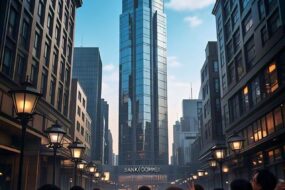
The concept of the wheel of retailing describes
The wheel of retailing describes a concept that illustrates the evolution of retail businesses over time. It describes how new retailers emerge. The answer might lie in a fascinating concept known as the Wheel of Retailing. This model unravels the lifecycle of retailers and illustrates how they evolve, adapting to consumer demands and market conditions. Understanding this dynamic framework can open your eyes to the strategies that shape our shopping experiences today. Join us as we dive into what the Wheel of Retailing describes, uncovering its origins, mechanics, and real-world applications in modern retail.
Origins of the wheel of Retailing describes
The wheel of retailing describes a concept that illustrates the evolution of retail businesses over time. It describes how new retailers emerge, offering lower prices and simplified services to attract customers. This initial phase often focuses on cost-effectiveness rather than luxury.
Originating in the 1960s, this model was first articulated by scholars who studied market trends. They observed patterns in how retailers entered markets with basic offerings, only to gradually upgrade their products and services.
As these retail businesses grow, they tend to increase their prices and enhance customer experiences. The cycle continues as competitors enter with even more appealing propositions at lower costs.
This dynamic process highlights an essential truth about consumer behavior: shoppers are always seeking value, while retailers must adapt or risk obsolescence in an ever-changing landscape.
Examples of retailers that have followed the Wheel of Retailing
The wheel of retailing describes and illustrates a natural progression in the retail industry, showcasing how certain retailers have embraced its principles. A classic example is Walmart. Initially perceived as a discount store, it revolutionized low-cost shopping and expanded into various product categories.
Another notable case is Dollar General. Starting with an emphasis on affordability, it captured market share through streamlined operations and convenience stores in rural areas. The strategy not only attracted budget-conscious consumers but also encouraged expansion.
Target represents a different angle, moving from essentials to stylish yet affordable products. This shift allowed them to tap into more affluent demographics while retaining their core customer base.
These examples demonstrate how retailers leverage the Wheel of Retailing model to adapt and thrive within competitive landscapes. Each has crafted unique paths that reflect the dynamic nature of consumer preferences over time.
Impact and criticisms of the model
The wheel of retailing significantly influenced how we understand the evolution of retail businesses. Its cyclical nature illustrates the transition from low-cost, low-service stores to high-end retailers. This model highlights market dynamics and consumer behavior.
However, it’s not without its critics. Some argue that it oversimplifies complex retail strategies. The landscape is constantly changing due to technology and shifting consumer preferences, which the model may not fully capture.
Moreover, niche markets are increasingly challenging traditional norms outlined by this concept. Specialty retailers often thrive on offering unique products rather than following a predictable cycle.
Despite these criticisms, many still find value in the framework for analyzing industry trends. It serves as a lens through which emerging patterns can be observed—though perhaps not a definitive guide for every situation in today’s diverse marketplace.
Application in the modern retail industry
The wheel of retailing describes a dynamic framework that remains relevant in today’s fast-paced retail landscape. Many modern retailers leverage this model to navigate market shifts and consumer preferences.
For instance, discount retailers like Aldi have embraced the initial low-cost strategy outlined by the wheel. They attract budget-conscious shoppers while gradually expanding their offerings to meet evolving demands.
E-commerce giants such as Amazon exemplify another aspect of the model. They started with books but expanded into various categories, continuously adjusting price points and service levels based on customer feedback.
Additionally, sustainability has become integral for many brands following the Wheel of Retailing’s principles. Retailers are now introducing eco-friendly products while maintaining competitive pricing strategies to appeal to environmentally conscious consumers.
This adaptability aligns businesses with changing market conditions and reinforces their position within the retail ecosystem.
Conclusion
The Wheel of Retailing describes a fundamental concept in retail evolution that has stood the test of time. This model illustrates how retailers often start with low prices and minimal services, gradually moving towards higher price points and enhanced offerings as they grow. It highlights an essential truth about consumer behavior: shoppers are drawn to value but seek quality as their needs evolve.
As we’ve seen, many successful retailers have embraced this cycle, refining their strategies and adapting to market demands. From discount stores evolving into department stores to luxury brands carving out premium niches, the Wheel of Retailing serves as a roadmap for understanding these transitions.
While some critics argue that the model oversimplifies complex market dynamics or overlooks technological advancements, its core principles remain relevant. Retailers today must balance innovation with customer expectations—an ongoing dance between affordability and quality.
In modern retail settings, applying insights from the wheel can guide new entrants in shaping their business models. Whether launching an e-commerce platform or a brick-and-mortar store, recognizing where you fit within this framework can inform pricing strategies and service enhancements.
The journey through the wheel continues to be pivotal for both established players and newcomers alike. Understanding it not only enriches our perspective on past trends but also equips us to navigate future shifts in the industry landscape.
For More, Click Here














